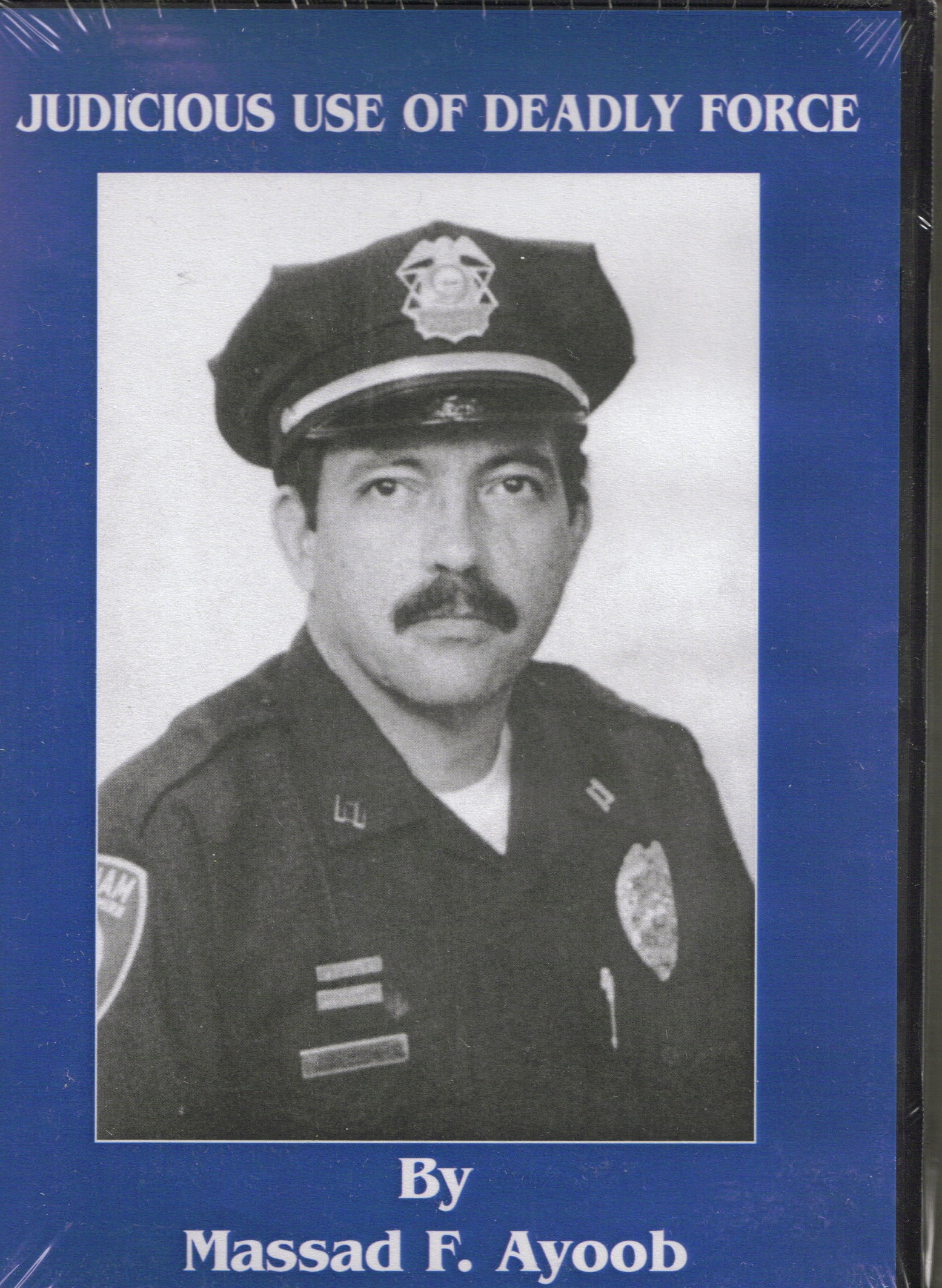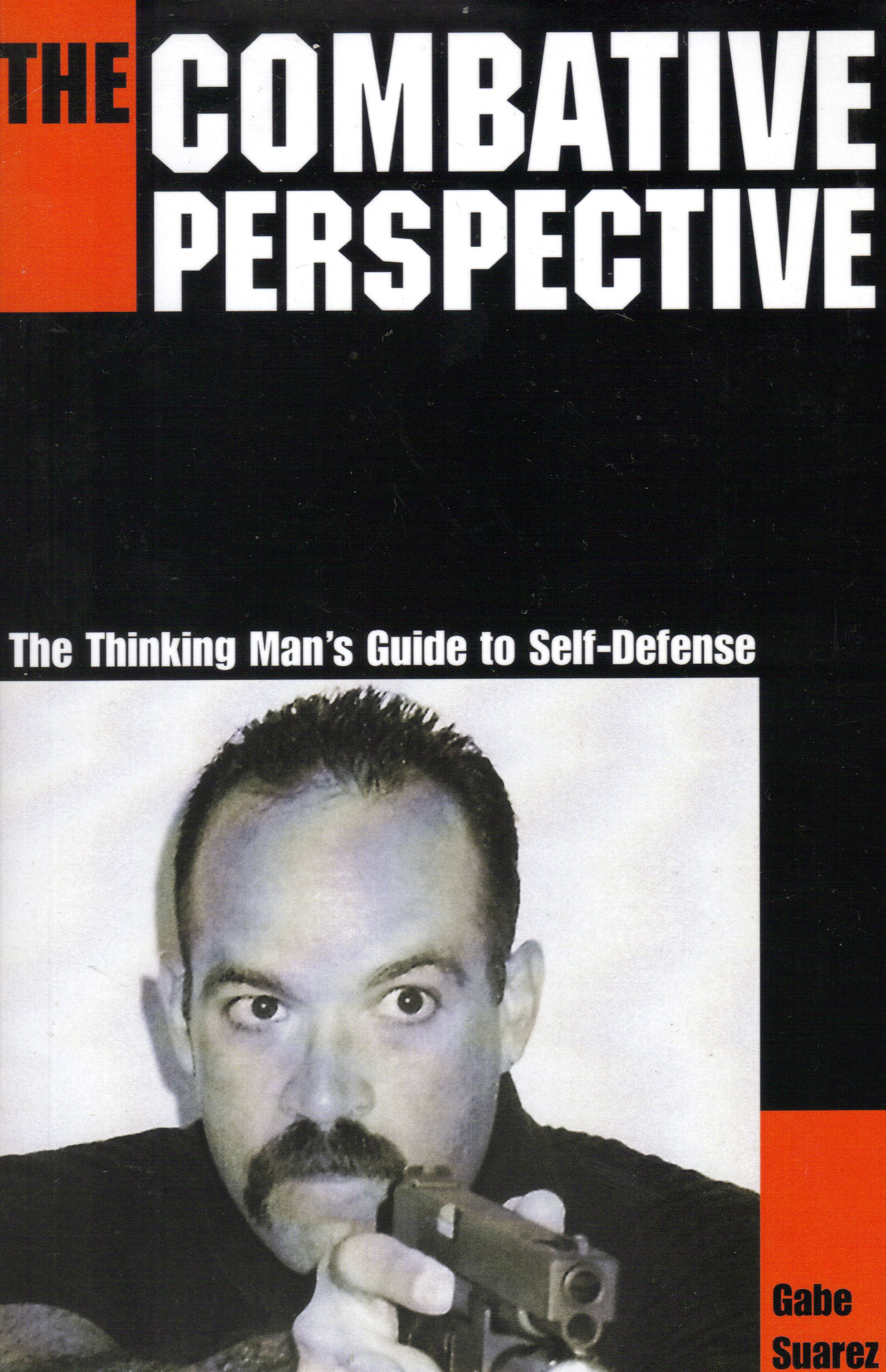|
In This Hub:
A Reality Break Amateur vs. Pro Knifers Cost of Knife Use Dueling vs. Survival Lies About Knife Fighting Fighting Fantasies Other Instructors Knife fighting? Lethal Force Instrument Violence Geeks Blog Weapon Disarms What If Monkeys NNSD Home Page LEO-Military Security Hub Legal Hub Martial Arts Hubs Psychological Survival Hub Self-Defense Hub Street Fighting Hub NNSD Home Page
Marc MacYoung? |
On this page:
Many years ago I identified knifers into two basic categories: Amateurs and Professionals. This idea got out of hand when people (who considered themselves 'knife fighters' or self-defense 'experts') picked it up, started running with it and then started arguing over what they thought -- instead of what I meant. I was trying to point out an important difference between how people attack with knives. However, the misinterpretations and arguments that resulted from this idea resemble the Sermon on the Mount scene from Monty Python’s Life of Brian. I’d like to reframe this idea to clear up the confusion that has arisen. In his book On Killing, Lt. Colonel Dave Grossman takes the old fight or flight model of violence and gives it a much needed refurbishing. He suggests that there are, in fact, 4 possible reactions to violence and the threat of violence.
1) Fight Number three is the reaction I’d like to address. According to Dr. Desmond Morris in The Human Animal, mankind is actually an amazingly non-violent species. To understand why this is, we must recognize that threat displays are designed to avoid having to use violence. The idea is if I jump up and down and go “booga-booga-booga!” loud enough, you’ll run away (or change your behavior). If you do that, problem solved and I don’t have to risk physical violence.(1) Here’s the problem with that, in the middle of an argument, people get emotionally committed to “winning” to the point of myopia. They are so wrapped up in the creation and escalation of a situation that common-sense goes out the window. This commonly occurs in two basic ways. First the threat display spins out of control. The second way is the threat display is dismissed by the other person. I often say the stupidest last words ever spoken when looking down the barrel of a gun is “You don’t have the guts (especially when said in Spanish)” and yet, you’d be amazed at the number of shootings that come about because of this attitude. This is a clear example of the second way.(2). People end up leaking on the floor because they are so committed to winning an argument they fail to see when the situation has changed into something else. They still think it is about threat display, counter display and 'winning' when in fact it has moved a hair's breadth away from homicide. In a solid majority of situations where a weapon is pulled, it IS done as a threat display. The intent to attack isn’t there – yet. It’s upping the ante in a conflict to show how serious a person is that you’d better stop what you are doing. It’s kind of a “See this weapon? If you don’t back off, I’ll use it.” This is especially true when someone pulls a knife when they themselves are feeling threatened. Unfortunately, that often isn't how this action is received. Realize that we're talking about people operating on the screaming-monkey-brain level here. Threat display is a very real inner-species reaction and many components are hardwired into our primate brain (ergo, the screaming-monkey-brain). While it may sound stupid in the calmness of reading, in the heat of the moment, it is easy for the other person not to recognize (or dismiss) the danger. That's because he or she is too focused on winning. Despite the weapon's presence, that person thinks he/she can keep on arguing. This is where many of the dismissing comments come from (e.g., You don't have the guts). These comments and the refusal to run like a rabbit arise from failing to realize that the situation has just escalated into something far more important -- and dangerous -- than one's personal feelings. The person facing the weapon is so committed to an emotional loop that even though they are looking at the weapon, they fail to see the danger. Unfortunately in this state all too many people are making emotional, not rational decisions. Remember the person making the threat display is scared, angry and emotional as well. Both of you are feeding the other's emotional turmoil with your own. This isn't thinking as much as it is operating on the 'screaming monkey' level. Therefore, no matter what the motivation for refusing to withdraw, failing to do so IS going to escalate the situation. And this escalation includes the person doing the threat display 'striking' the other person as the next level of his "go away so I don't have to engage in real violence" strategy. In normal circumstances this would just be akin to a warning slap or a punch -- not necessarily to harm, but to convince the other person to back off. Yes, it is a physical assault, but it is meant as just another stage of threat display. However, when holding a knife, such a blow becomes, if not fatal, then the inflicting of grievous bodily injury(3). This is what I was referring to when I spoke of "amateur" knife attacks. It is an uncoordinated and unplanned method of attacking. And even though they are actually attacking, most of the time the intent to attack is lacking. It is a threat display that has spun out of control. Territorial vs. Predatorial violence It is important to realize that most fights are based in this pattern. Whether it is realistic or not, the attacker feels he is defending his ’territory.’ Something in his little pea-brain has identified you as the transgressor in his space. It is here that threat displays play a critical role. He isn’t going to say “Excuse me old chap, but I think perhaps you should withdraw, eh what?” Usually, he’s going to be howling, barking and drooling -- displaying threat signals to convince you how serious he is about you needing to leave. (Take note however, that among truly dangerous people, the threat display can be as subtle as a low key “You better leave.”) Recognize how close to violence a threat display is – but it hasn’t actually gone there …YET! But is a very small step. If you decide to take option A, there is a good chance violence will not happen. Why? Because the threat display worked; the situation is over. He’s got no reason to continue. However, if you don’t choose option A – for whatever reason – YOU are contributing to moving the situation into physical conflict. He tells you to leave, you say ‘no’ and it’s on. And it's on because you caused it to be. Remember we said that staying escalates a situation? Here is where a lot of people, who don’t understand the difference between territorial and predatorial violence, make a fatal error. They are so scared of violence happening that they actually cause it to happen. The most common reason for this can be found in * said in a squeally, panicky voice * “But what if he follows me?!?” (4) HELLLOOOOOO! Here’s two dollars. Go buy a cup of coffee so you can wake up and smell it. If you attempt to leave (without throwing in some snide comment to provoke him) and he follows you, it bolsters YOUR claim that it was self-defense. “I tried to leave, he followed me to attack. See? Self-defense!” However, if your fear that he might follow you keeps you there, it undermines your claim that it was self-defense. Why? Because people who are fighting – although they claim it was self-defense – stick around to fight. In fact, that’s kind of one of the best indicators that it was a fight (illegal) as opposed to self-defense (legal). Cops, DA’s and judges see it all the time, so it doesn’t look good when you do it. No matter what your motivation was for not withdrawing, it makes you look guilty of helping to make the problem. With this in mind, let’s take another look at pulling a knife as a threat display. Often in a heated argument, someone will pull a knife to show how serious he is about why you better leave off. This is NOT predatorial, it is instead territorial! He's telling you to back off and doesn't want anything else. While in a calm and rational state of mind it is obviously stupid to stick around and continue to argue, in a heated game of ‘escalato’ it is easy to think he’s bluffing and call him. Well, except for one thing, he has a lethal weapon in his hand and is in a highly emotional and agitated state. What do you think is going to happen? DUH! As a side note, I have actually witnessed people snap out of this kind of escalation after they have severely wounded or killed someone. They are so wrapped up in their rage and emotions, they don’t see the danger of what they are doing until it is too late. After the other person hits the floor bleeding, they snap out of this enraged state and are shocked at what they have done. This is where you get the Einstein excuse of “I didn’t mean to shoot him.” I've already made this point, but because of squabbling morons who think they are knife fighting studs, I have to say it again. What I referred to long ago as an 'amateur' attack refers to the kind of attacks that arise from these sort of escalating situations. That is to say threat displays that escalate because emotional stress. A key component to recognizing this kind of situation (aside from all the yelling and screaming) is the waving and brandishing of the weapon. Putting that in simple English, he will show you the knife. You have to see it to know the threat exists so you can make an informed decision to beat feet. If the brandishing of the knife fails, when he 'attacks' he will lead with it (e.g., wild slashes). When you’ve told someone holding a knife that he doesn’t have the guts to use it, what will usually happen is that he will attempt to strike you. The physics of his attack are akin to a sloppy punch, hit or slap. In fact, as is often the case, he’s thinking that it is just another stage in the threat display. Even though he’s struck you, he’s still offering you the chance to leave. Except, oops, he’s punching you with a knife in his hand. Threat displays that escalate into attacks are usually disorganized and wild kinds of attacks, but the presence of a knife make them dangerous. Whether someone is attacking you in an organized fashion or just wildly flailing, that knife is going to cut flesh. This is why a knife is legally defined as a lethal instrument. And its use – even if closed – is viewed as a lethal force attack. Whereas what I referred to as a ‘professional’ attack, is more predatorial in nature. You have no option except to participate. That’s because the guy is coming into kill you. Not rob you, not to intimidate you, not to convince you to leave, not to teach you a lesson … to kill you. This is no threat display where violence might happen, it IS happening. In these cases you will very seldom see the knife until after it has entered the flesh of the victim (and then you only usually see it as it is pulled out for another stab) These are NOT, repeat not, the coordinated and graceful kind of attacks you see in what is being sold as Filipino Martial Arts. That’s a different set of physics for a different situation. (Namely, where your opponent has a weapon in his hand and poses a danger to you. You attack differently in these circumstances because you may need to slam it into reverse right quick if he counters). They are full on committed attacks designed to overwhelm you and prevent you from resisting as you are killed. In light of this, the knife seldom leads. In fact, the opening move of these kinds of attacks is usually some kind of grab or pinning of the victim’s limb(s). This traps the victim into the location and prevents him from being able to escape or effectively resist. Such assaults, while they can be done by one person, are often two people working in tandem. One person pins the victim and the knifer stabs him repeatedly. The good news about these kinds of attacks is that they are comparatively speaking very rare. I say comparatively because in some circles they are very common (e.g. prison), but the greatest number of knife assaults stem from a threat display that went sideways. Another bit of good news is that in order to encounter predatorial attacks you really need to have been misbehaving. People don’t attack in this manner unless you’ve seriously crossed a line. Is there a chance that a lunatic might decide that you are the Anti-Christ and the only way to save his soul is to kill you? Well, yes, but realistically you have a better chance of being hit by lightening. On the other hand, messing with another man’s wife, burning someone in a drug deal or telling a biker to go do an unnatural act with his mother might just make you a candidate for such an attack. So does living a high-risk lifestyle and running with the big dogs, so take my advice and don’t play unless you’re willing to pay. The good news about these kind of knifers is that if you leave them alone, they will usually leave you alone. By now you’ve probably asked yourself “But what about getting robbed with a knife?” Good point. That is a third type of violence: Criminal. Here is where we make another difference from Peyton's system. Criminal violence, while predatorial, usually involves both giving a person an option, (namely “give me what I want or I will hurt you”) and displaying the weapon. Bascially you have to see the weapon to recognize the degree of threat so you will choose to give him what he wants. The difference is that unlike a screaming fight that escalates the criminal has slyly moved into attack position before he displays the weapon. And when it is displayed, it isn't brandished, it's in attack position. The attack is already lined up and ready to execute if you don’t comply. Unlike the wild flailing of an emotional threat display, the attack will be more professional and focused. Also unlike territorial violence, Option A is going to cost you something (Money, goods or rape). This is why we say criminal violence, while predatorial in nature has many elements of territorial violence. And, that this blending is often the source of confusion to people who have not experienced the different types first hand. The problem posed by criminal violence is that while you do have a moment to react, if you react ineffectively you’re dog meat. You don't want to get into an exchange where you are trading punches for stabs. That's a bad trade off and one you are going to lose. If you hesitate too long or if your actions don’t immediately render him unable to act, then you are going to get cut … and cut bad. By now you should realize that both predatorial and criminal knife use would fall under the category of "professional." And putting it bluntly, while there is no such thing as a 'professional knife fighter,' there are knifers out there that are so slick and smooth that the only thing to call them is professionals. Putting it nicely, I've seen knife work out there that is so good it scares the beejeebers out of me. And it had nothing to do with all the flash and twirl you see in commericalized Filipino Martial Arts schools or self-proclaimed 'knife fighting' associations and groups. It was stone cold murder. People often think of knife fighting as two guys slashing each other wildly with blades. With this limited misconception, they think their FMA, combat whatever or 'weapons based' martial art training prepares them for dealing with knives. I, on the other hand, see "knife work" as covering a much wider spectrum of danger. And in that spectrum there are all kinds of horrors and problems that macho, swaggering self-proclaimed "knife fighters" have no clue about. And yet these are the people who dis' me because I talk about amateur and professionals when it comes to using a knife on another human being. Personally, I'd recommend you think long and hard before you risk your life on their opinion about what's involved in "a real knife fight" and why their training is so good.
1) Dr. Morris further stipulates in "Manwatching: A Field Guide to Human Behavior." "Fighting represents the failure of threat display. If intimidation signals cannot settle a dispute, then extreme measures may be called for, and conflict may develop into full-scale bodily assault. This is extremely rare in human societies, which are remarkably non-violent, despite popular statements to the contrary, and there is a sound biological reason for this. Every time one individual launches a physical attack on the body of another, there is a risk that both may suffer injury. No matter how dominant the attacker may be, he has no guarantee of escaping unscathed. His opponent, even if weaker, may be driven into a desperate frenzy of wild defensive actions, any one of which could inflict lasting damage." (pg. 156) Return to Text 2) Obviously most situations are a blend of these two basic elements. However for communication purposes we have separated them into distinct categories. In practice, they tend to escalate off each other. Return to text 3) Hopefully the range will be wrong and the person holding the knife will just be flailing and slashing. These kind of 'attacks' are also a form of threat display. By themselves, they are not in effective range. Unfortunately too many people who are caught in the 'escalato follies' and martial artists (who believe they are trained to handle knife attacks) actually step into the blade's range. And they get cut for their efforts. Return to text 4) A big part of the problem is that people trapped in the 'screaming monkey mind (WIMs) don't hear the 'or' in the territorial threat display (i.e. leave or I will kick your butt). Instead they hear 'AND.' That is to say, they are so afraid of being attacked that they hear "leave and you will be attacked." Thinking they have no option, they decide to stay. Violence occurs if you decide not to take option A. And it is violence that you have directly participated in the cause. Return to Text |

|
||||||
|
||||||||













